The house has been an ongoing project--interrupted by three days straight of making Christmas cookies--but other than cookies, pretty much all I've been working on (or rather...all I've had time to work on) is house stuff. And it's been fun! Just very, very busy.
One of our priorities was cover all windows. So we had blankets and sheets up for a while and then gradually bought blinds and drapes. We couldn't find the right size blinds for this bay window in the family room -- so I just made them. Curtains are super easy... just an over-sized rectangle, so it only took a few hours. It actually would have taken less time if I wasn't having issues with my sewing machine...it was a little dusty.
The How To:
First thing's first -- measure the windows. For each window pane, you'll need a cut of fabric that is 5 inches + the height of the pane long and the width of the pane + half wide. (If you're using a fabric that you want to be very billowy, then double the width). Just for example, if you're window pane is 6x10" then you'll need a cut of fabric that is 9x15" (6+3 by 10+5).
When shopping for fabrics, you'll need to find a fabric that is wide enough to cover 1.5 of each pane. I ended up using 4 yards which I cut into 4 equal cuts per pane. The width of each panel may have been slightly more or less 1.5 the width of each pane -- but it doesn't have to be exact so long as you have enough to create billows and enough for folds/seams which take away about an inch off every side.
To avoid fraying at the ends, you'll need to fold each edge over twice and iron to stay in place for sewing. If you have a serger, you can serge all of the edges so you only have to fold once. I left my serger in NJ, so I just double folded. Either way is fine and takes around the same time, I'd say.
Once you've folded and ironed about half inch (or less) along all four sides, fold down about 1.5 inches along the top width. This will be where you can feed the curtain rod (you can use dowel rods or string -- we used string). Iron in place. When all the edges are ironed in place, double check the measurement of the window to be sure your panel is long enough. (It doesn't need to reach the tippy top of the pane because you'll have to install a rod for it to hang from). When fitted, sew along the edges -- and make sure not to sew shut the opening for the curtain rods/string!
To sew seamless corners, use the pivoting method. Simply sew up to the corner (slowly so you don't pass it). When you get very close to the corner, hand spin the machine using the hand wheel until the needle is right at the corner. Leave the needle down, lift the foot lever up, spin the fabric to face the direction you need to go, lower the foot lever, make the first few stitches with the hand wheel to make sure everything is smooth, then sew with the pedal as normal. This will give you a clean sharp corner. If that sounds confusing, click here for a visual tutorial.
To avoid sewing the openings shut, unfold the 1.5" fold and start the stitch at the top corner going straight down. After sewing along the first side, bottom, and then other side (pivoting at each bottom corner), then end the stitching. To sew the top edge, fold the 1.5" fold along the top down, and sew along that edge (not worrying about pivoting the two top corners). I used a cream colored thread to match so it's hard to see the stitch work -- but if you look closely you can see the holes.
To install, the BF drilled small holes on the interior of the wooden window frame, then inserted small hooks. We just strung the rope through, pulled taut and tied a knot, tucking the knot inside the curtain opening so not to be visible. To hide the rope and the hook, just slide the curtain over it all. (He put the curtains up backwards because he likes how the seams look -- so I let him. Otherwise, you would normally flip it so the seams face outside).
And here's the final result! Nothing fancy or difficult to make/install. To look more legit, I'd suggest using a dowel rod. But I like the way the rope hangs a bit and isn't perfectly straight. Maybe later I'll get more creative with the fabric choice (we chose a cotton/linen looking fabric that was cheap -- $5 a yard -- and opaque enough for privacy, but didn't venture into patterns/colors). Maybe I'll do that for the dining room window -- which is currently being covered up with a bed sheet. Haha.
Including fabric, thread, hooks, and rope the total cost amounted to under $30.

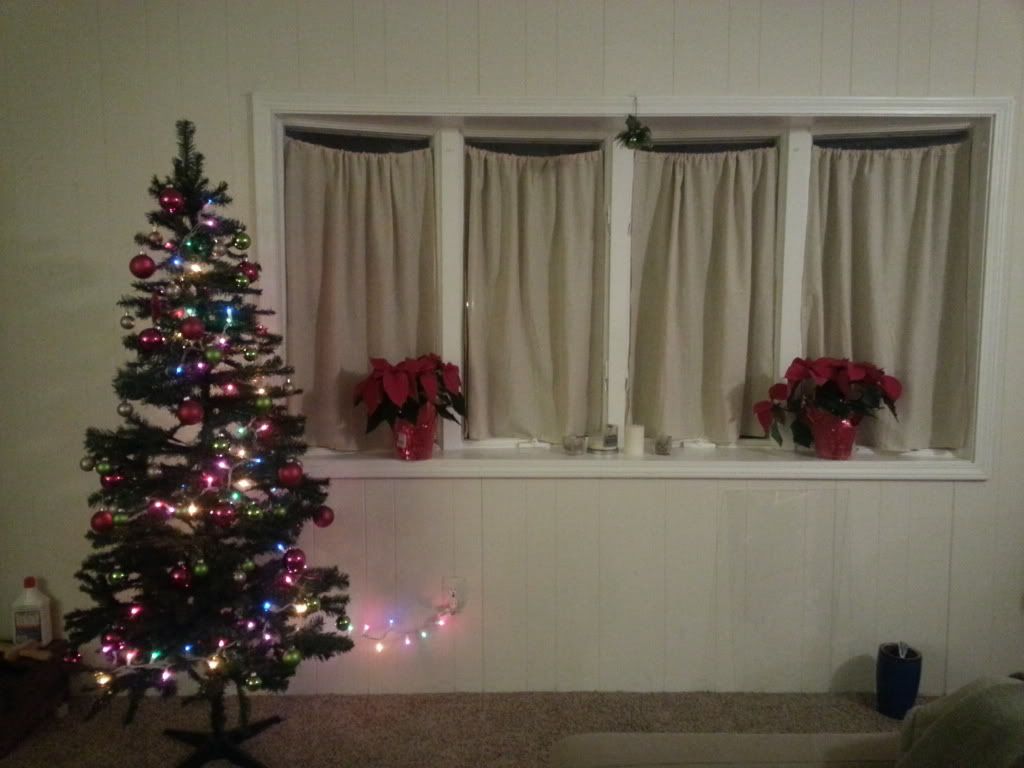

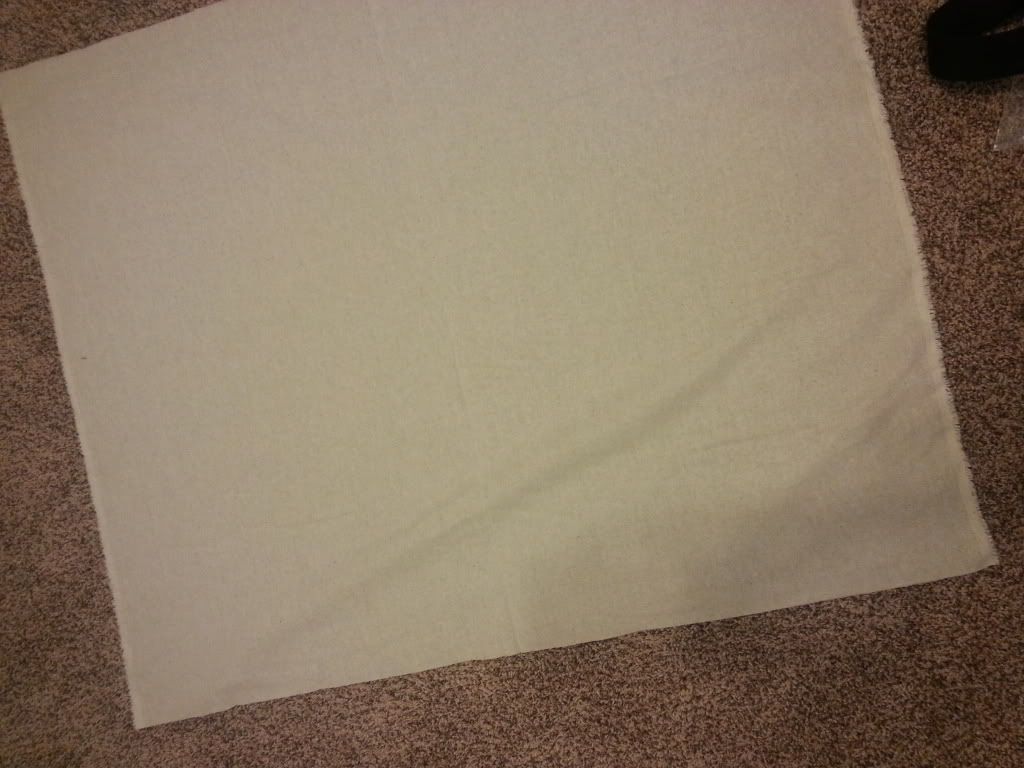
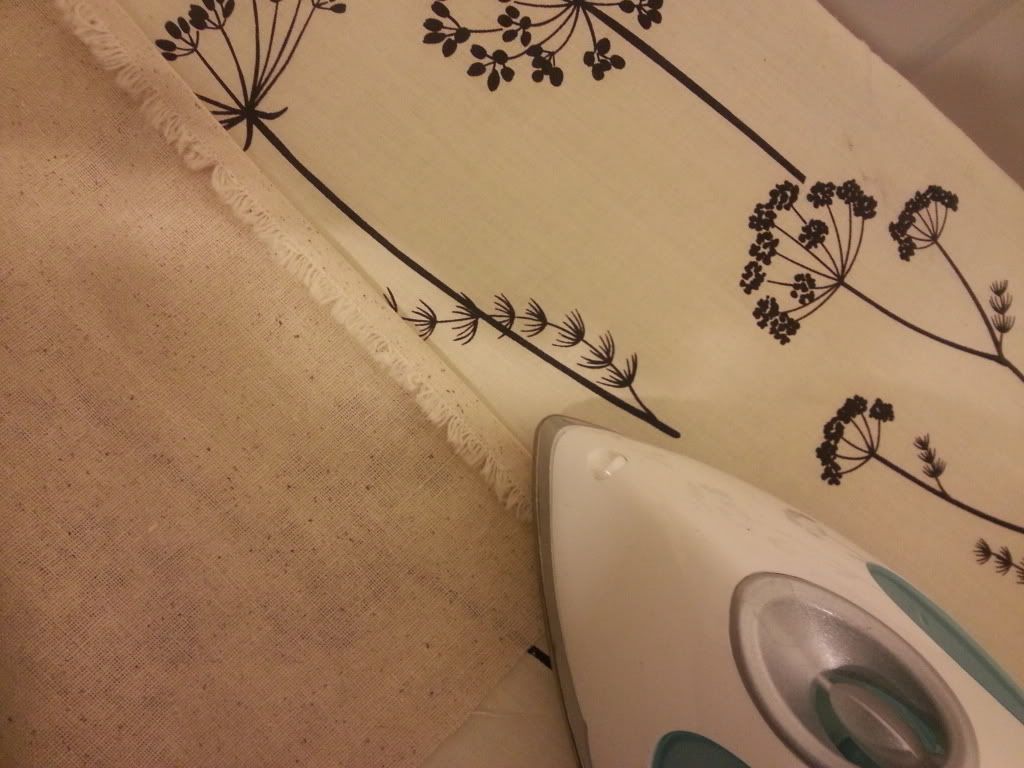
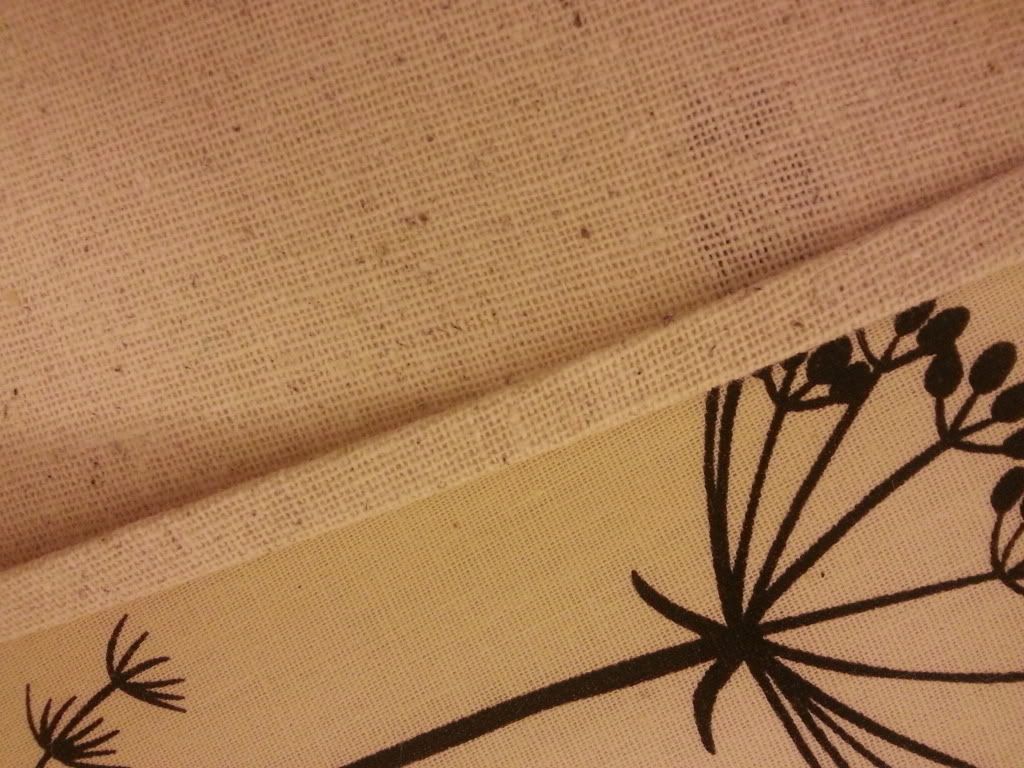

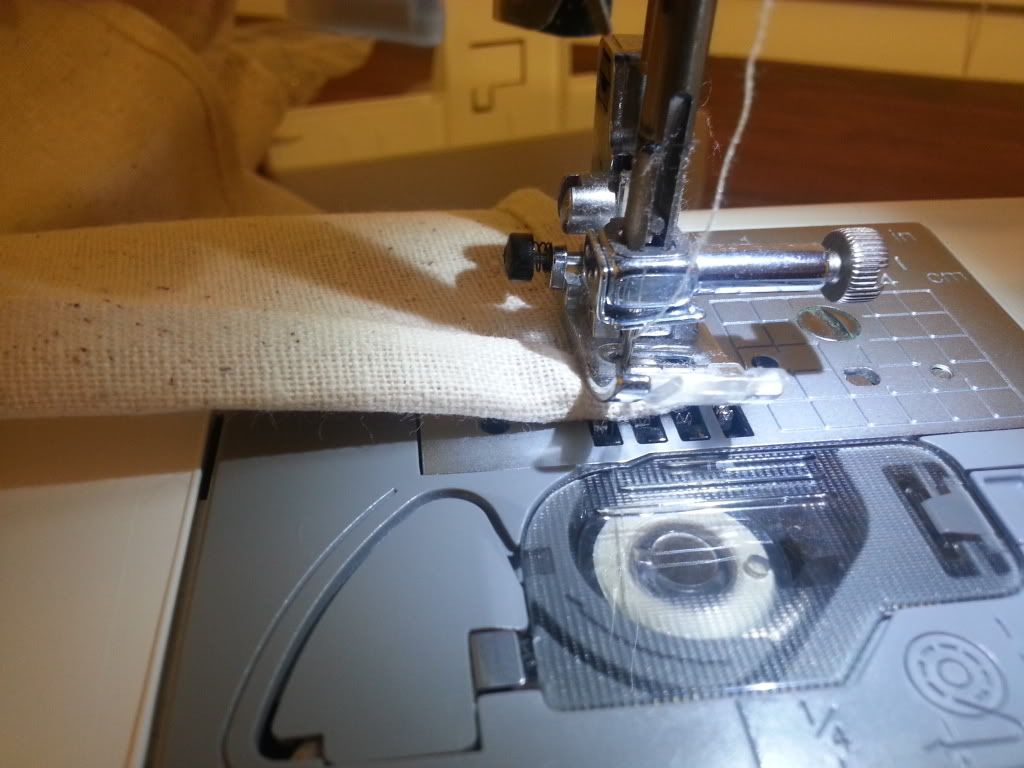
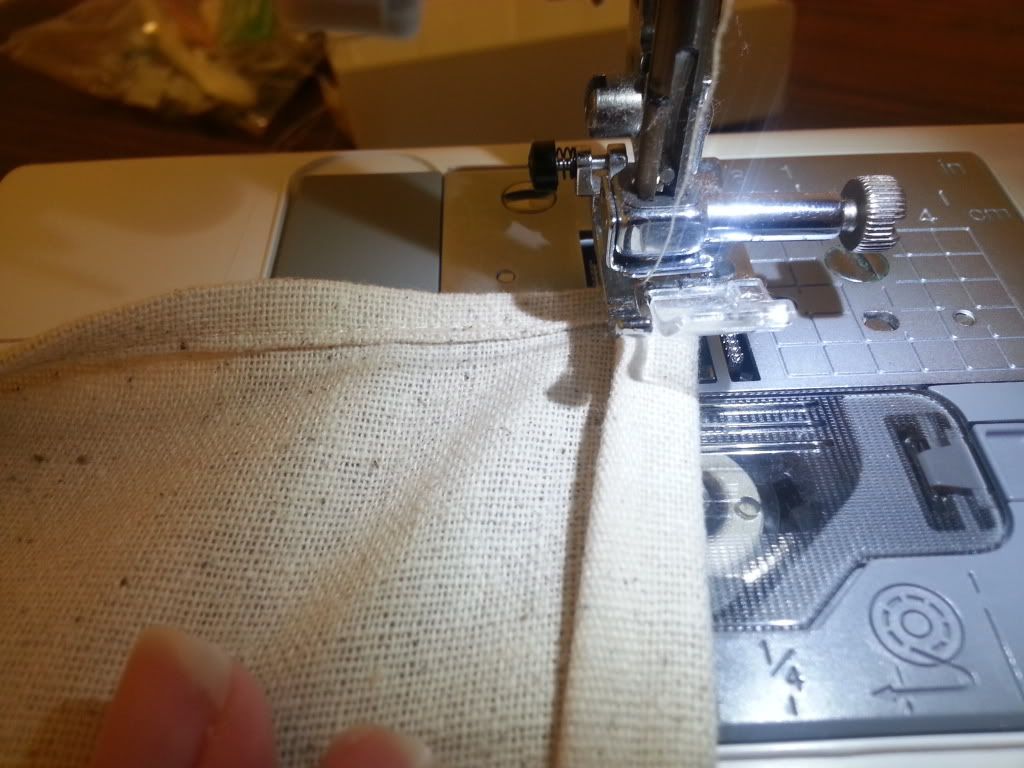
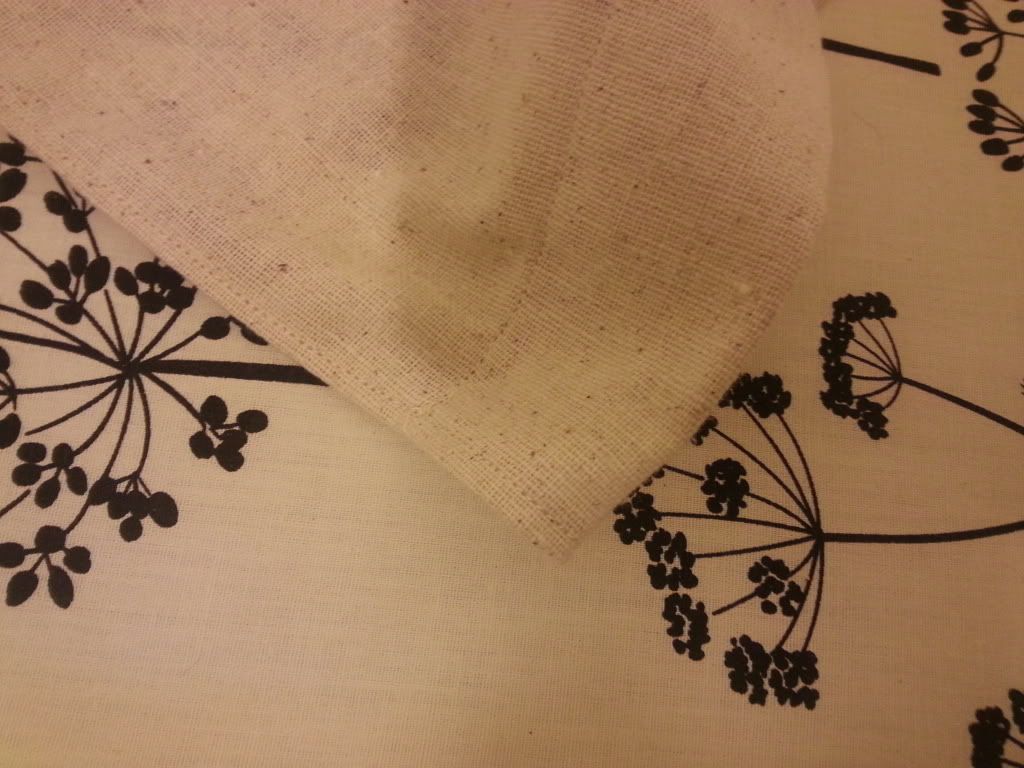
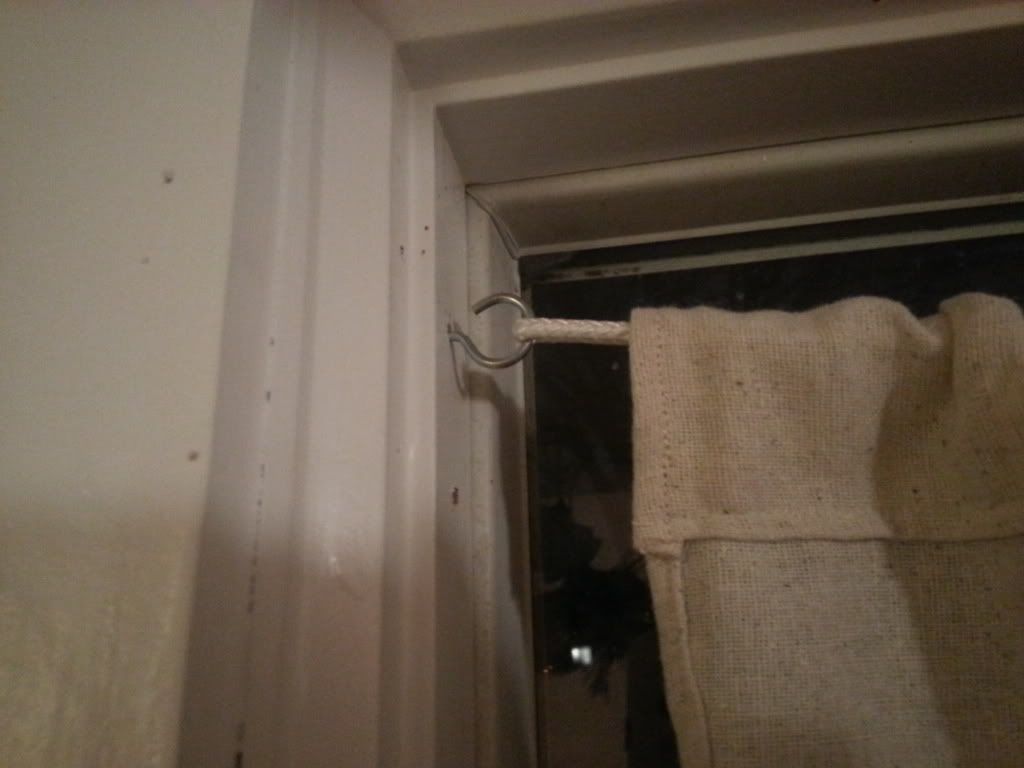
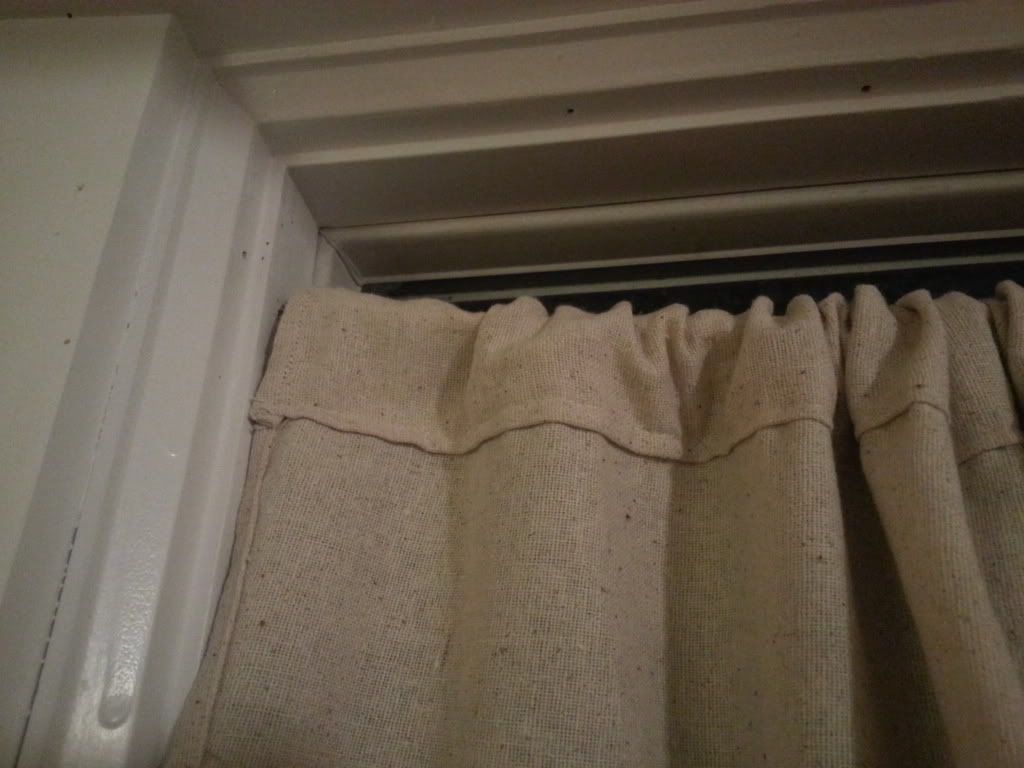
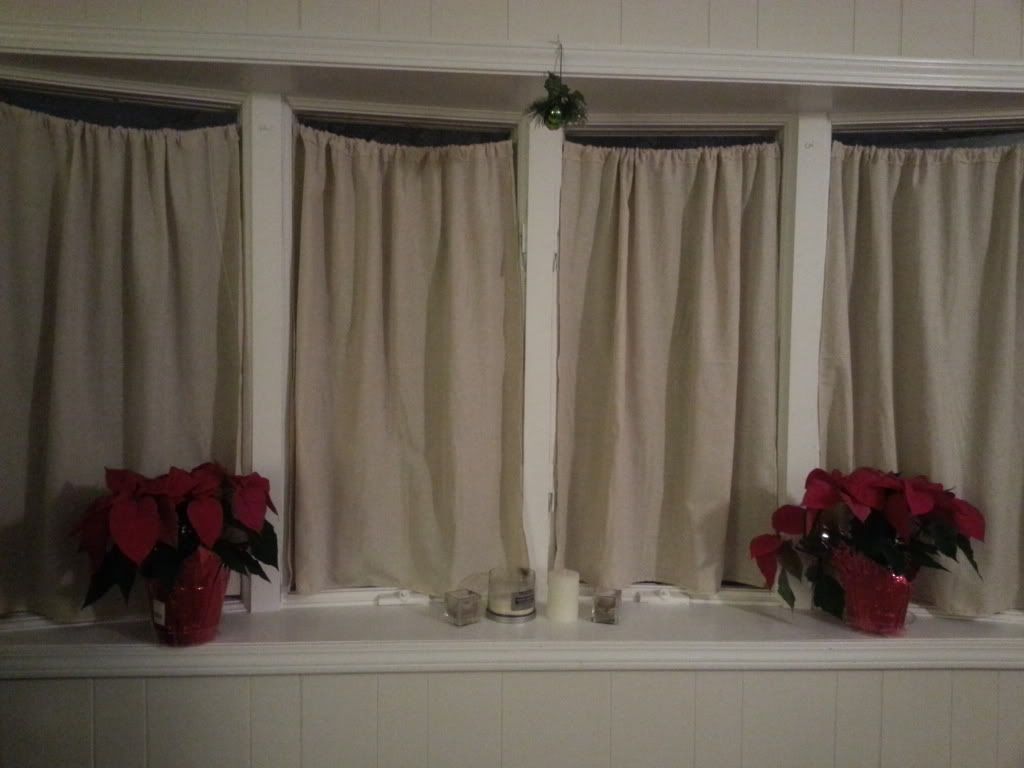

It’s nice that you don’t actually see much when you look at it from the outside. But since it’s reflecting quite clearly like that, it might be best to put curtains for good measure, lest you get birds smacking into it. That would be inconvenient, to say the least.
ReplyDeleteThese curtains panels are beautiful and a very rich color. It is a good value for the money.
ReplyDelete